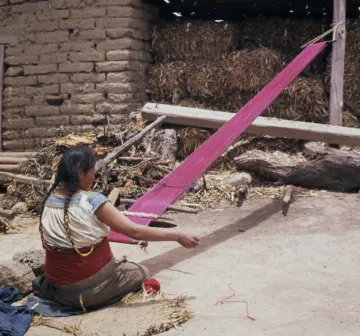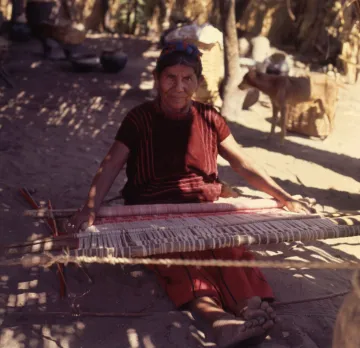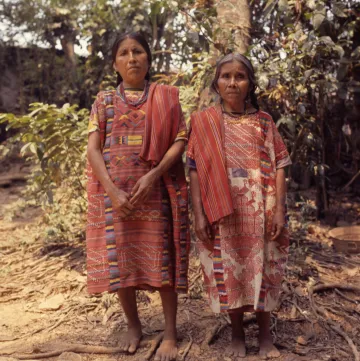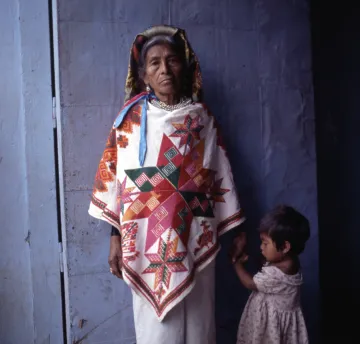About Mexican Textiles

Back-strap loom. Cordry Collection, tranparency no. 086.
Most of the costumes Frida wears were hand-woven, as well as hand embroidered and stitched. The process of weaving traditional clothing in Mexico is typically performed using a back strap loom. Treadle looms of Spanish origin are also employed, especially for weaving blankets, ponchos, and other larger items.
Back strap looms are time consuming to set up, but allow for the weaver to produce very long pieces of cloth. The width of the cloth produced is limited by the width of the weaver's reach. In certain weaving locales, different types of brocaded and/or open work designs are added to the cloth in the weaving stage. These designs tend to vary by region.
The two main types of traditional dress pictured on this site are the huipil and quechquemitl.

Treadle loom. Cordry Collection, tranparency no. 115.

Two women in Ojitlan huipiles in 1964. Cordry Collection, tranparency no. 140.
Huipiles begin with a basic rectangle of cloth. This can be a single wide piece from a loom or two or even three narrower pieces which have been laid together lengthwise and then stitched together to form a single piece. The cloth is then folded in half, stitched up the sides (leaving and opening for arms) and then a neckline is cut and finished at the top. Huipiles tend to be found among native groups further south in Mexico, such as Mixtecs, Amusgos, and Chinantecs. This style also extends south into Chiapas and Guatemala

Nahua woman of Cuatlamyan in her quechquemitl. Cordry Collection, tranparency no. 148.
The quechquemitl is a shawl-like garment which may be made in a number of ways. The most common, and the easiest, is to fold a rectangle of cloth in half to make a square and then sew up the shoulders while leaving an opening for the neckline. Ways of constructing and wearing the quechquemitl vary widely by region. These upper garments are more common among indigenous groups further north in Mexico, such as Huastecs, Otomis, and Mazahuas.
Several selected costumes reflect the influence of European dress styles, with gathered skirts and blouses made of commercial cloth, and decorated with sequins, rickrack and other flairs. These ensembles exemplify the rich regional Mexican folkloric costume traditions.





